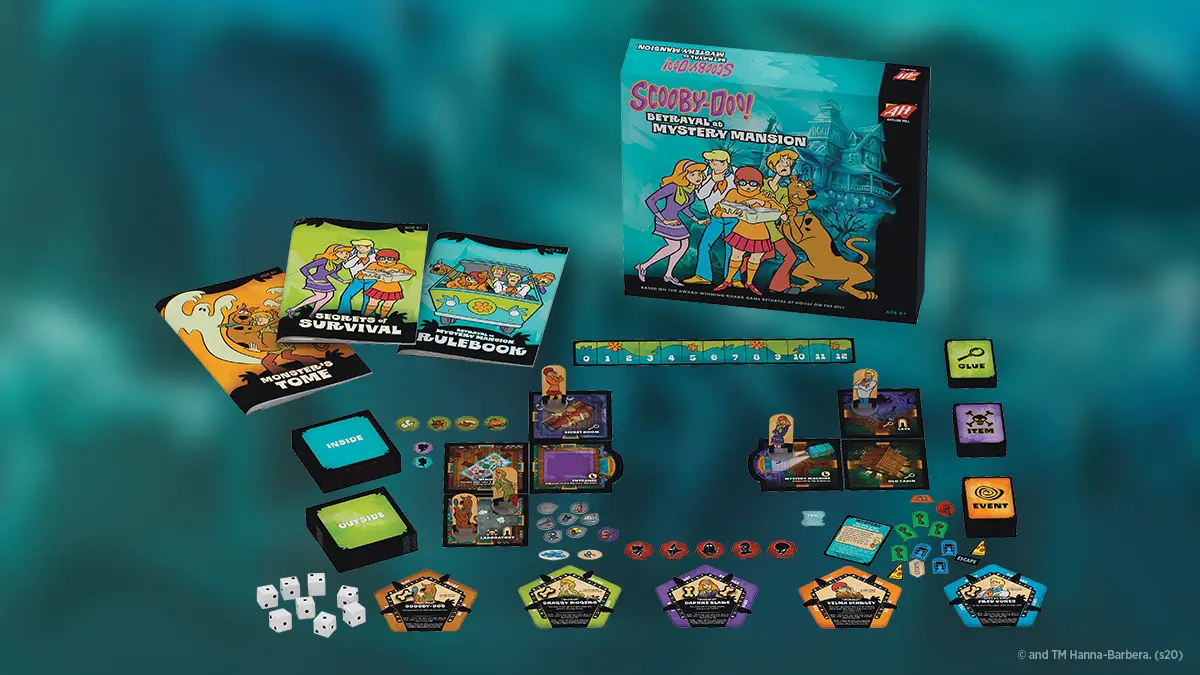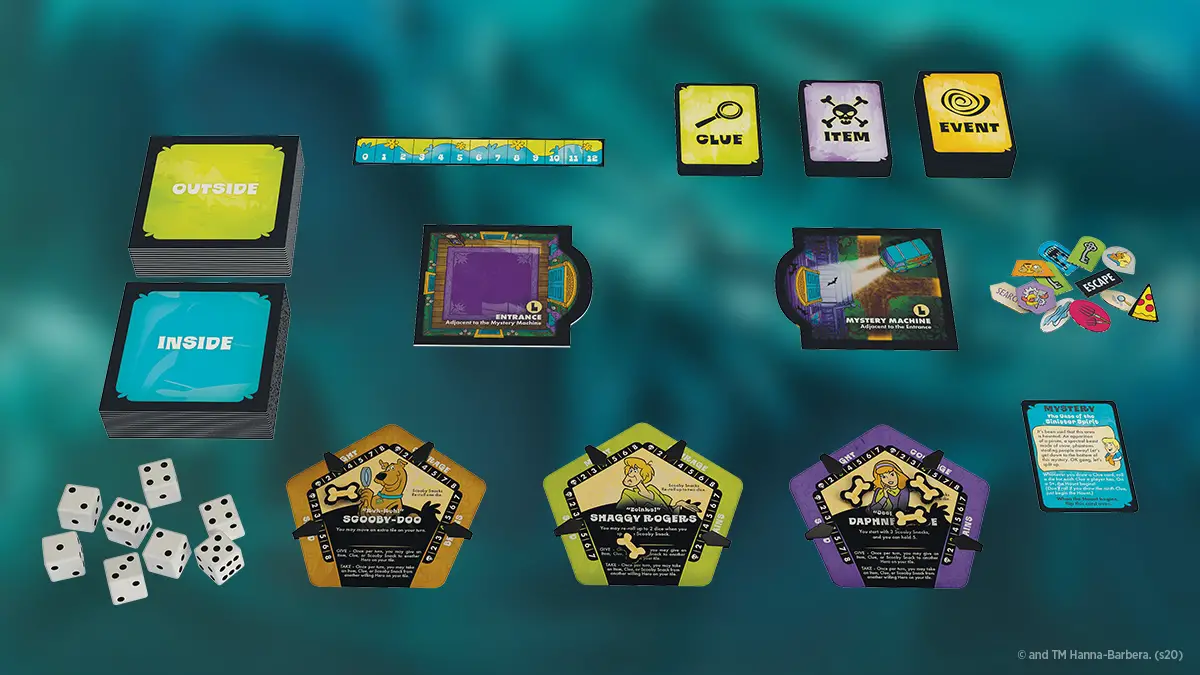When you get into board games, there are certain games that everyone in the hobby will insist you play. Things like Settlers of Catan, Dominion, or (shudder) Ticket To Ride. These range the gamut from the accessible to the obtuse, but they tend to serve as good entry points into the different genres and forms in the hobby. When it comes to horror games, there are few games as beloved and long-lived as Avalon Hill’s Betrayal at House on The Hill, the classic tale of secret rooms, creepy events, and the sheer replay ability that comes from the randomized house layout and dizzying combinations of circumstances that can cause the different haunts. But the variety that makes the game so fun can also make it a little daunting, and while the horror theming isn’t over the top it is still a bit much for younger players. Thus enters Scooby-Doo: Betrayal At Mystery Mansion.

When it was announced, the pairing of Betrayal with Scooby-Doo made sense, since the fearful pooch has had a now fifty-year-long reputation as a gateway to the spookier side of things for children everywhere. The game, which released last summer, intended to take the original formula and streamline it, helping it fit better with the Scooby-Doo theme while increasing its accessibility for kids. As a comparison Betrayal at House on The Hill is for ages 12+, while Betrayal At Mystery Mansion version is for ages 8+. So is this merging of the two worthy of a Scooby Snack, or should they be split up like the Mystery Gang in so many failed plans?
What’s In The Box?

The size of Betrayal At Mystery Mansion is…less than the original game. It kind of looks and feels like an expansion a la Widow’s Walk, but is actually a completely stand-alone adventure that isn’t compatible with the others. Everything about the game has been “Scoobified” to resemble the groovy aesthetics of the original 1969 cartoon Scooby-Doo Where Are You? The gothic greens and sickly yellows of the original have been replaced by bright and cartoony colors, and the corridors of Mystery Mansion are far better lit than the dark and gloomy ones in the House on the Hill.
The characters are all in their classic looks (Fred has his ascot!), and the monsters that appear are some of the most beloved monsters in the Scooby canon like the Creeper, The Zombie, and the Spooky Space Kook. It’s not all classic references, however, and amongst the haunts are references to more modern Scooby releases like Scooby-Doo and the Witch’s Ghost and Scooby Doo and the Alien Invaders. The whole game is a real treat for fans of Scooby no matter their age.
While Avalon Hill did a good job with the art and printing, it does feel a liiittle cheap here and there thanks to flimsy and more easily damaged cardboard than in the base game. In addition, the little chits you use to track your character’s stats are impossible to attach to your card, let alone move. By the end of the evening, every character card had damaged edges thanks to how damn tight the little plastic bits are.
How’s It Play?

Not much to say about the basic gameplay if you’ve played the original Betrayal. Each player chooses a character with a special ability and unique stats that help them overcome challenges. Then, they each take a turn moving around the mansion or (in a change from the original) the outdoor area around the Mystery Machine. Each room discovered has an item, event, or clue (replacing the omens of House on the Hill that affects the players and the game. Once a certain amount of clues are found, a haunt begins and one of the players “betrays” the others and controls a villain that must be escaped or defeated by the remaining heroes. Each side has a goal to meet and the first one to achieve their win condition is the victor!
Overall, the game is way easier than the original. Hardened haunt-heads (is that the term? Let’s make that the term) won’t be particularly spooked by anything nor find any truly difficult challenges to overcome. There’s no obstacles in the game, no haunt matrix, and overall rules of movement and and play have been made much faster and easier to understand. To accommodate new or younger players, haunts are explained together and the “traitor” volunteers for the role rather than being randomly chosen. Which haunt actually takes place is also affected by the choice of “Mystery card” at the start of the game, each one essentially representing a difficulty setting for the game. Even then, haunts are overall much more forgiving than usual, and monsters move at a set speed like the players.
The Verdict

I think Betrayal At Mystery Mansion has gotten a bad reputation among fans of the classic for being a “kiddie” version of their favorite game. First off, you don’t have to be a kid to enjoy Scooby-Doo, Scooby Snacks are for everyone. Second, this is actually a great way to get the Betrayal experience without having to dedicate a huge block of time to it. Plus, it’s a lot easier to learn, so if you want to have a groovy ghoulie time with new people it’s not nearly as frustrating and you can eventually move onto original Betrayal pretty easily.
Kids, of course, are going to love this game. Even if they’re not as into Scooby as they could be, the imagery is pleasant and fun while the gameplay is extremely well suited for them to understand. This is a great game for sleepovers or Halloween parties (whenever those happen again).
[rwp_box id=”0″]
You can pick up a copy of Scooby Doo: Betrayal At Mystery Mansion on Amazon or your FLGS!
Images via Avalon Hill and Warner Bros.

